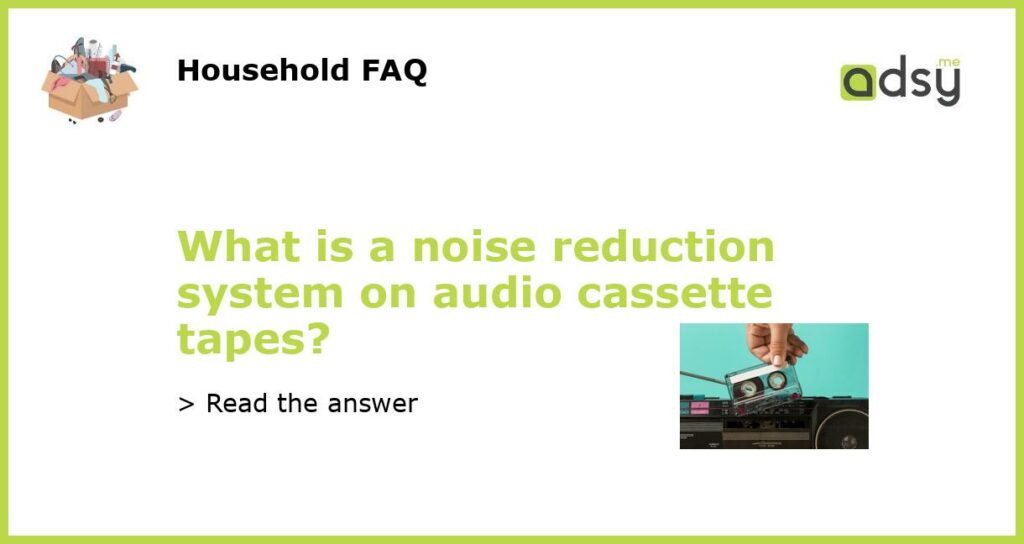Understanding the Basics of a Noise Reduction System on Audio Cassette Tapes
If you were born before the 1990s, you probably grew up listening to music on cassette tapes. Back then, the quality of the cassette tape was sufficient, but most of the time, people experienced a hissing sound in the background. To minimize this noise, manufacturers developed the noise reduction system (NRS). Let’s take a closer look at what it is.
What is a Noise Reduction System on Audio Cassette Tapes?
A Noise Reduction System on Audio Cassette Tapes was developed to reduce the hiss and noise caused by the tape’s friction against the cassette player’s hardware. The hiss sound is commonly known as white noise, which is generated by the electromagnetic interference produced by the friction of the tape head against the tape.
The NRS technology aims to reduce these noises by increasing the dynamic range of the sound, thus making music sound better overall. The noise reduction system works by removing high-frequency hiss sounds in the recording while keeping the lower frequencies intact. This results in a clear sound, which is much easier to listen to.
How Does the Noise Reduction System Work?
The Noise Reduction System on Audio Cassette Tapes works by using a companding method. This method involves compressing the audio signal while recording it on the tape and then expanding it during playback. To use the NRS effectively, both the cassette player and the cassette tape must have the same NRS technology, as different systems will not be compatible.
By using noise reduction systems like Dolby NR, the cassette tapes could produce high-quality sound without the hissing sound. Many companies developed their own noise reduction systems, including Yamaha, AKAI, and Denon, which had their own unique features.
The Noise Reduction System on Audio Cassette Tapes was a significant technology innovation that improved the quality of the sound from cassette tapes. With the development of digital music formats like MP3, the noise reduction system is now no longer widely used. However, there are still people who enjoy listening to music on cassette tapes and appreciate the improved sound quality that NRS technology provides.



![Abba Gold (Mc) [CASSETTE]](https://m.media-amazon.com/images/I/31Yk6b8kW-L.jpg)
![Cigarettes After Sex [CASSETTE]](https://m.media-amazon.com/images/I/31s3ypd+zML.jpg)
![Guardians Of The Galaxy: Awesome Mix Vol. 1 [CASSETTE]](https://m.media-amazon.com/images/I/51D2YTc-jmL.jpg)